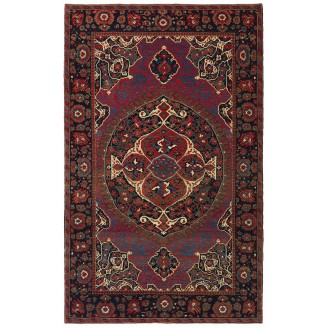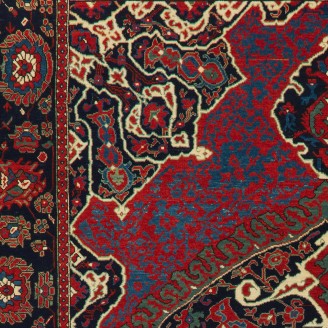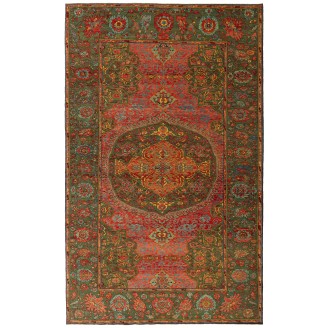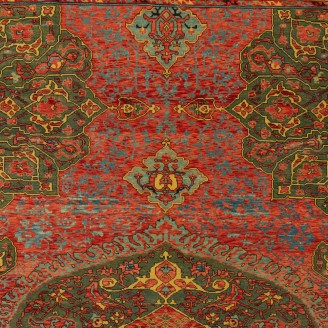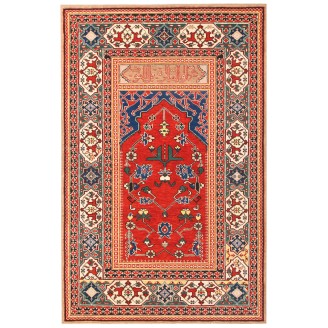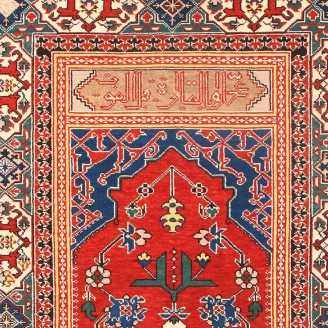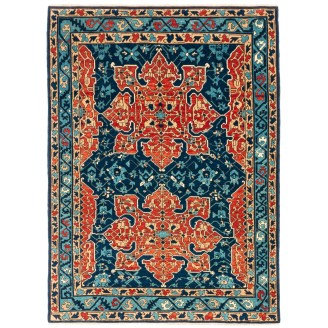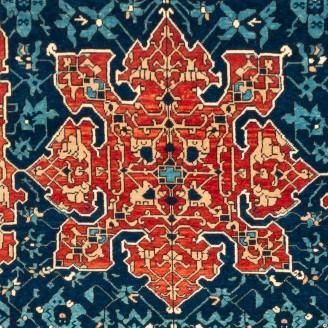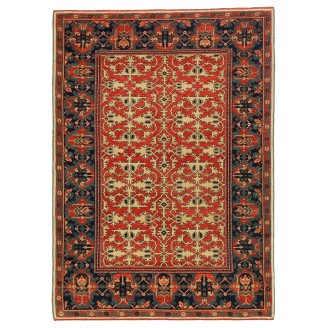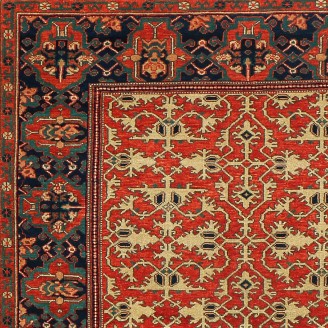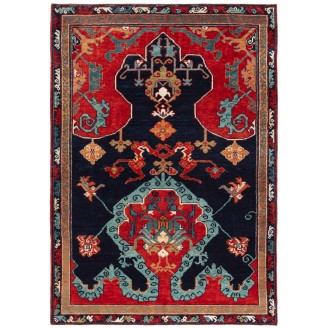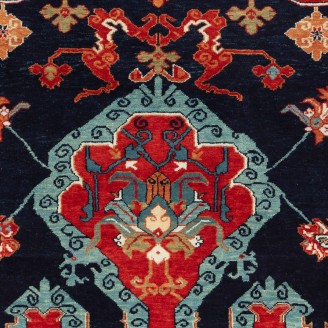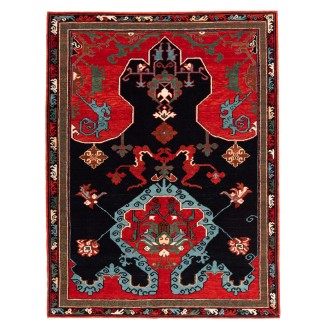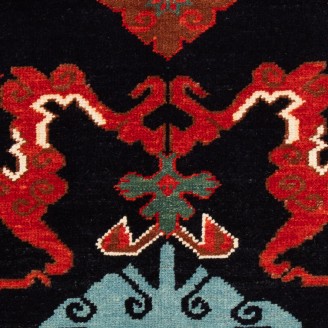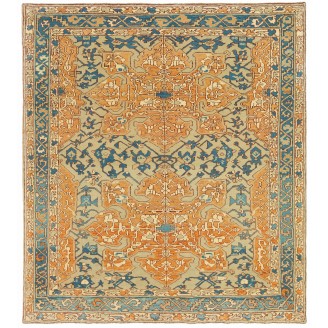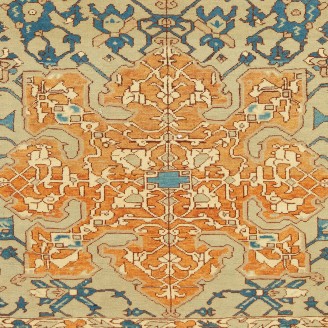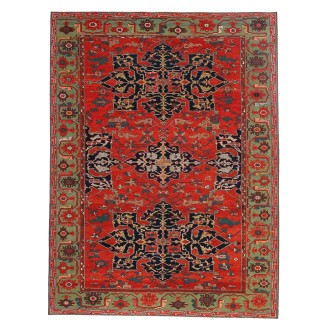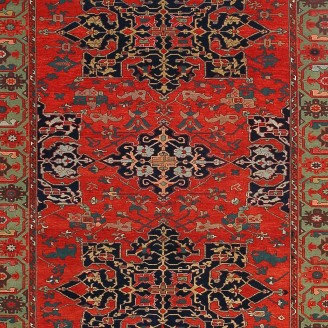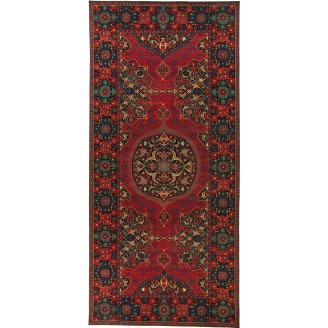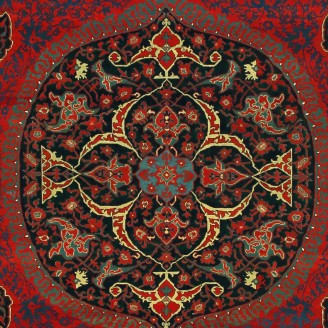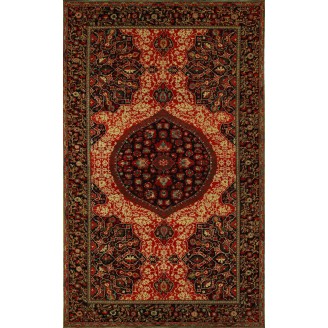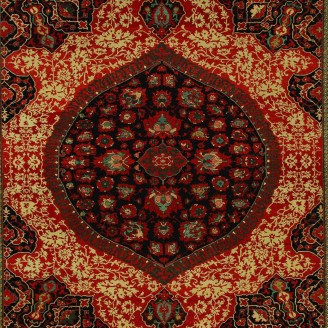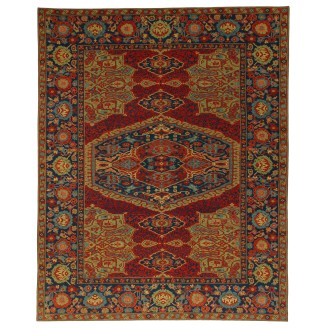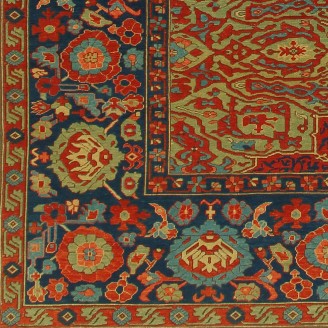The town of Ushak ( Usak or Oushak ), east of the port city Izmir ( Smyrna ), is probably one of the most important and renowned carpet centers. Carpets have survived since the 16th century and can be seen in several museums. In the 17th century, great quantities of Ushak carpets were made for the royal houses of Europe, often incorporating crests; many Christian churches, not only in Transylvania, were often decorated with huge pieces.
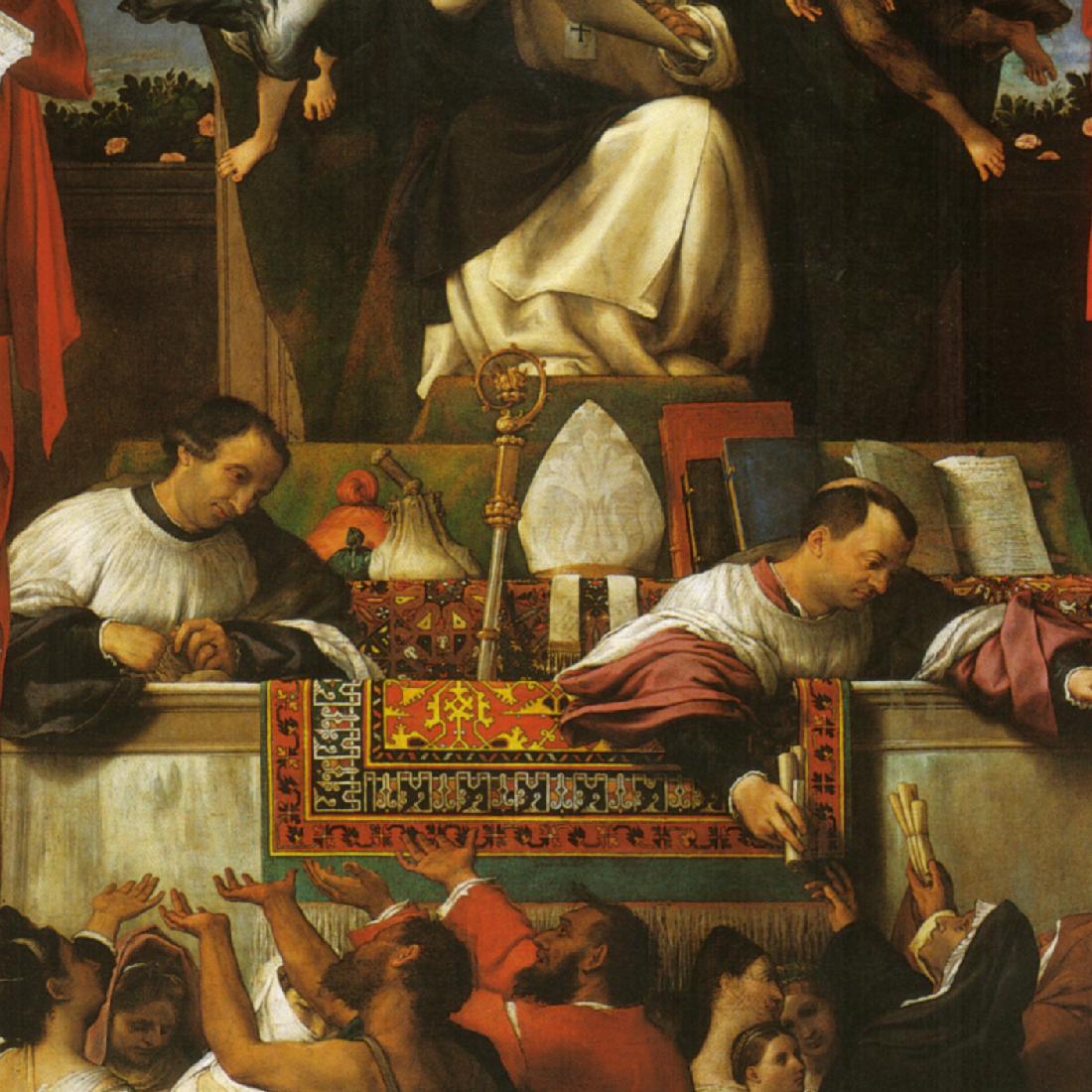 The Alms of St. Anthony by Lorenzo Lotto, 1542, with two magnificent Oriental carpets, the one in the foreground the type for the Lotto carpet, the other a "para-Mamluk"
The Alms of St. Anthony by Lorenzo Lotto, 1542, with two magnificent Oriental carpets, the one in the foreground the type for the Lotto carpet, the other a "para-Mamluk"Before around 1450, the larger part of the population of Anatolia appears to have been made up of nomadic tribes. The Ottomans tried various methods to settle people in villages, including imposing a sheep tax, and their records show that Turkmen settlements were engaged in cotton, timber, and charcoal production in western Anatolia by this time. Ushak was a walled city and, therefore, a relatively safe place. It is likely that when some of the Turkmen nomads living in western Anatolia started to settle in Ushak from the 1450s onwards, others retained their nomadic life in the surrounding regions. There are no indications that Ushak-produced carpets were made for the Ottoman court (paintings of the time indicate an almost exclusive preference for Persian carpets). However, some may have been commissioned to cover the floors of mosques. Perhaps artists from royal workshops were sent to Ushak to encourage carpet production, bolster the settlement policy, and ultimately legitimize carpet making and selling so that these activities could be taxed. Such artists might have studied the local nomads' patterns and then adapted and refined them into the so-called 'classical' Ushak designs. If the classical Ushak carpets were made for the marketplace, then it was probably not until the end of the 16th century that they were produced in large enough numbers to be traded to the West and that the conditions were right for doing so.
According to their structure and patterning, there are several types of Ushak carpets: the star Ushak, the medallion Ushak, the ‘bird’ carpet (with a white background, the name relates to the shapes of the field motifs), and ‘Chintamani’ carpets (often with a white background and three-ball pattern, mostly in connection with cloud bands). Many great painters have ensured the survival of Ushak carpet designs by including them in their works. Two representatives of the Ushak group take their name from such renowned artists: pieces with plaited band medallions in several variations are named ‘Holbein’ carpets after Hans Holbein, the younger; ‘Lotto’ carpets refer to the painter Lorenzo Lotto. Beautiful old Ushak carpets are rare and seldom appear in the trade. Belonging to the same family as the “Holbein-Rugs,” The type is usually identified as a “Lotto” design, again after a 16th-century European master, Lorenzo Lotto, of the Venetian School, who represented such rugs in his paintings. Instead of the “Holbein” octagons, we find here an open design of continuously alternating rows of octagonal and cross-shaped forms created entirely from palmette leaves in yellow, set against the red of the ground. In harmony with the “Holbeins,” the “Lotto” rugs use the same Kufic border design.
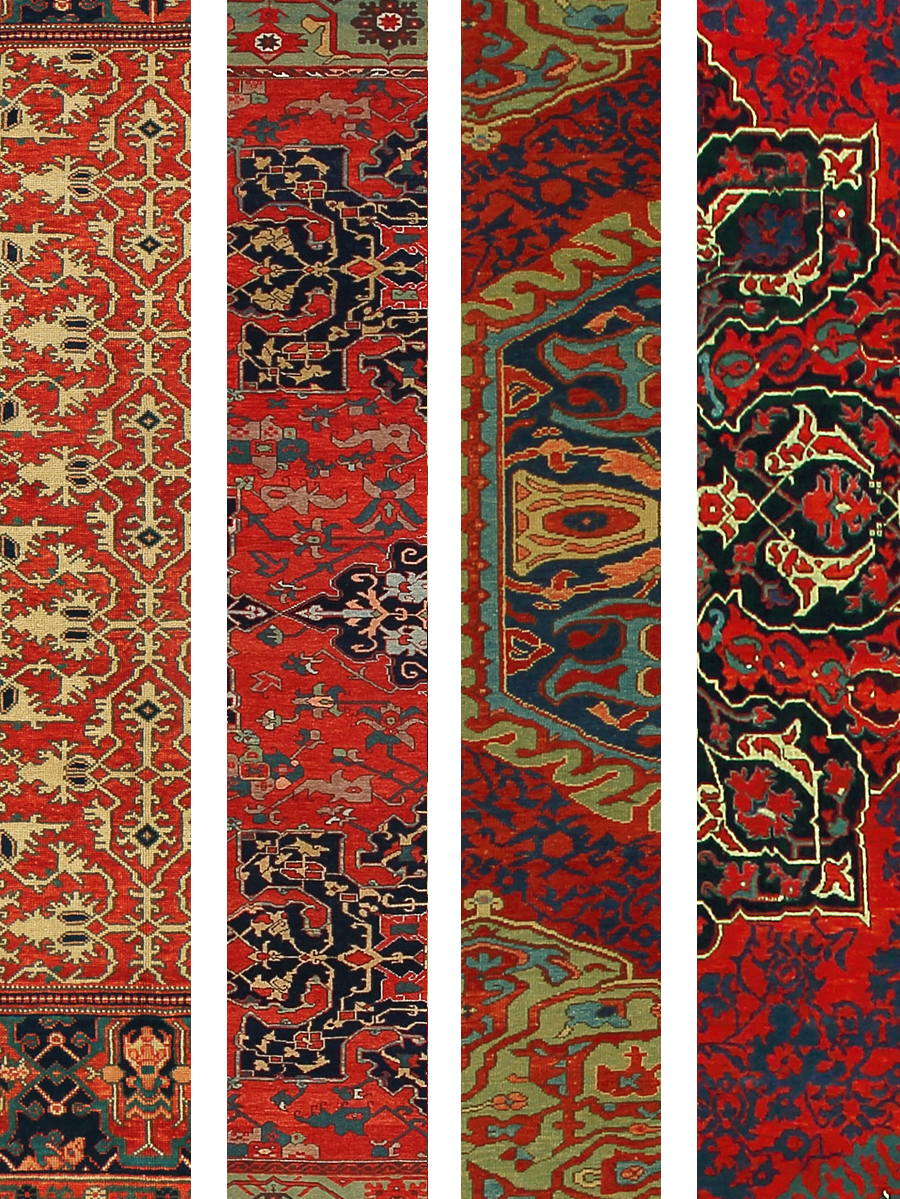 Ushak Rug Patterns
Ushak Rug Patterns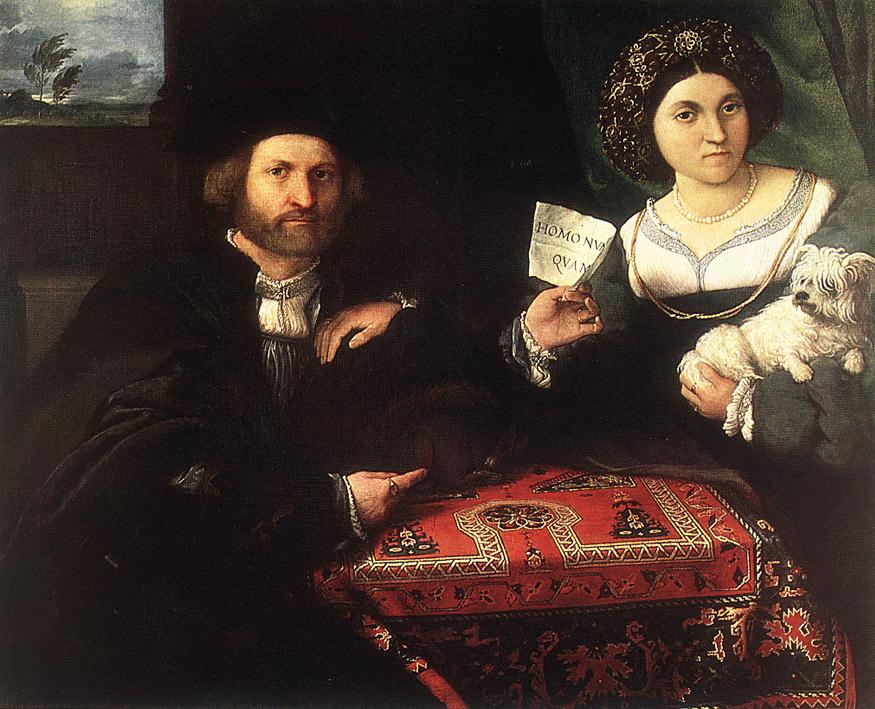 Lorenzo Lotto's Husband and Wife, 1523, with a "Bellini" carpet showing the keyhole re-entrant motif, late 15th to early 16th century.
Lorenzo Lotto's Husband and Wife, 1523, with a "Bellini" carpet showing the keyhole re-entrant motif, late 15th to early 16th century.Although all the Ushak carpets share similar colors and weaves, there are still considerable variations. The field patterns are very similar, but there are many borders. The dyes tend towards cinnamons, terracotta tints, gold, blues, greens, ivory, saffron, and grays, employed with a soft red as its primary color, offsetting the large-scale floral motifs from the field in a bright blue. The luxurious quality of the wool (for which Ushaks had always been known) aided the colors' luminosity.
Ushak rugs are known for the silky, luminous wool they work with. The late 19th-century weavers came from villages outside Ushak and employed tribal techniques. Paramount to these techniques were larger knots (sometimes less than 30 knots per square inch) and an all-wool foundation. The tribal style fused with the older Ushak/Smyrna designs. The merger of the two styles created a new style known as late 19th/early 20th-century Ushak carpets, which was commercially woven into the new decorative Ushak carpets.
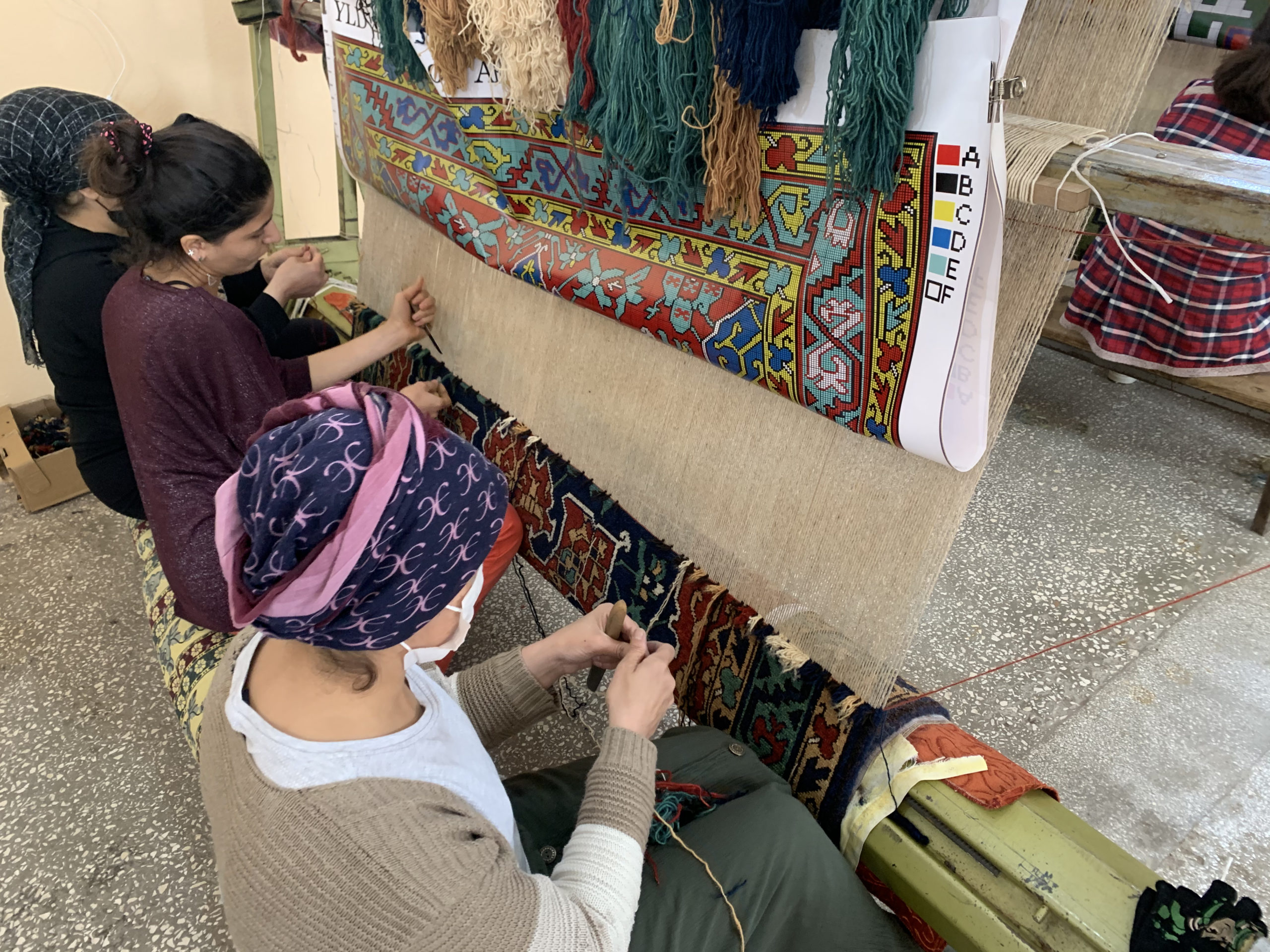 Weaving of an Ushak Rug in our atelier
Weaving of an Ushak Rug in our atelier
